
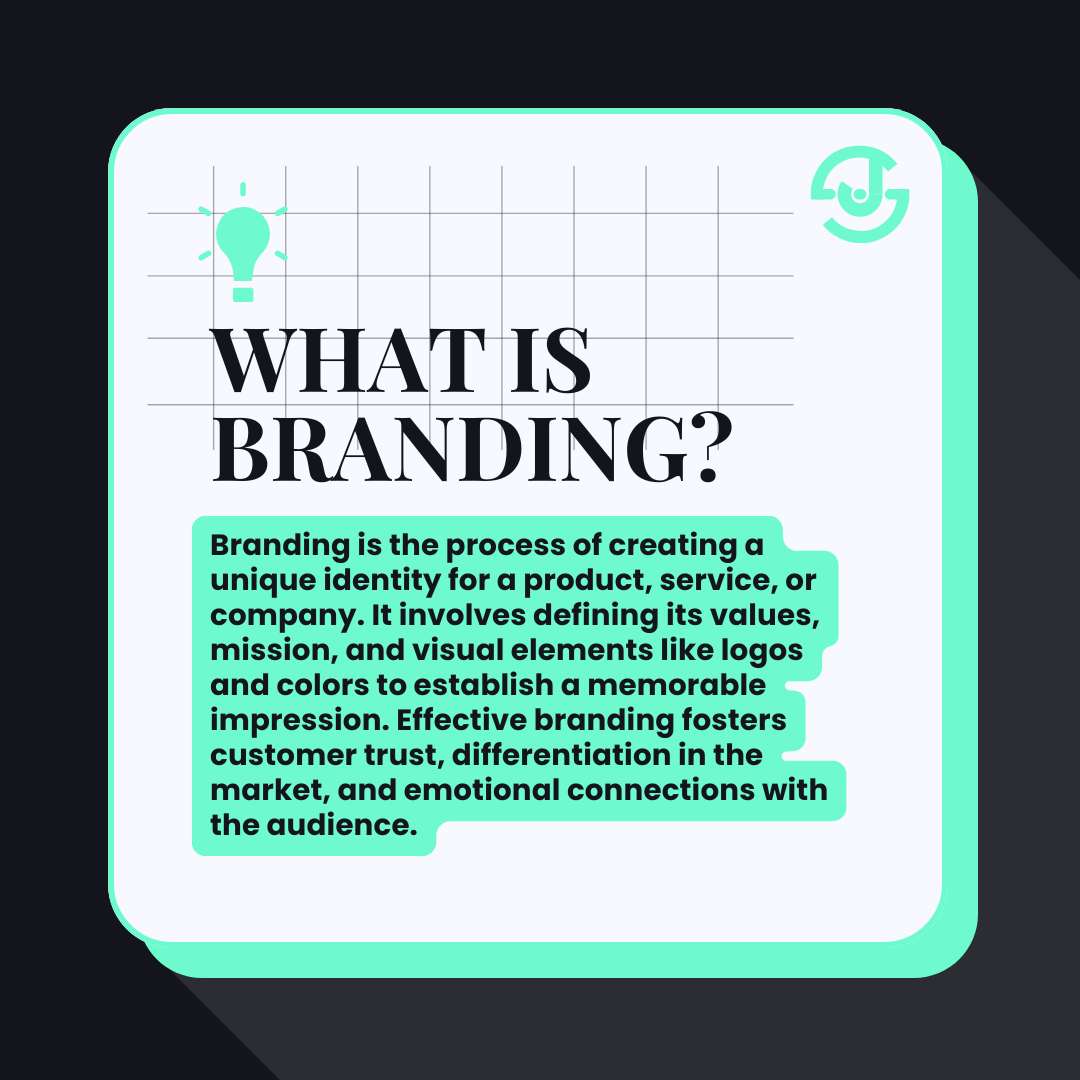
Branding
You have often come across the term "branding" when working with a branding agency for your new business, when a company updates its visual identity or brand messaging, or when a company launches major ad campaigns to increase its brand awareness. Branding is the essence of any businesses; it tells users about that business's values and identity.
However, a person without any background in this Field may not understand what is being discussed or written. They may get confused or, at times, be exposed to incorrect definitions.
By the end of this blog, you will have a basic understanding of what branding is, how it evolved, what it consists of, why it is important, and much more.
Let's dive into the basics before exploring more complex branding topics in our upcoming blogs. We’re excited to clear up any ambiguities you may have about this term.
The key topics you will learn in this post:

JSwebart is one of the leading branding and design agencies, with more than 6 years of expertise in the industry. Within this period, our team has delivered exceptional brands that are impacting future on local, national and global levels. Apart from brand identity design, Jswebart also provides UI/UX design, web development, packaging design, digital marketing and print design services.
Subscribe for insights, case studies, and updates penned by the experts at JSwebart.
Before understanding the definition of Branding, let's explore if it is a new or old concept. Branding has been used in the business realm for centuries. It has evolved with the evolution of mankind. The signs of branding can be seen way back in ancient times, where artisans and craftsmen used to mark their products to show its ownership and quality.
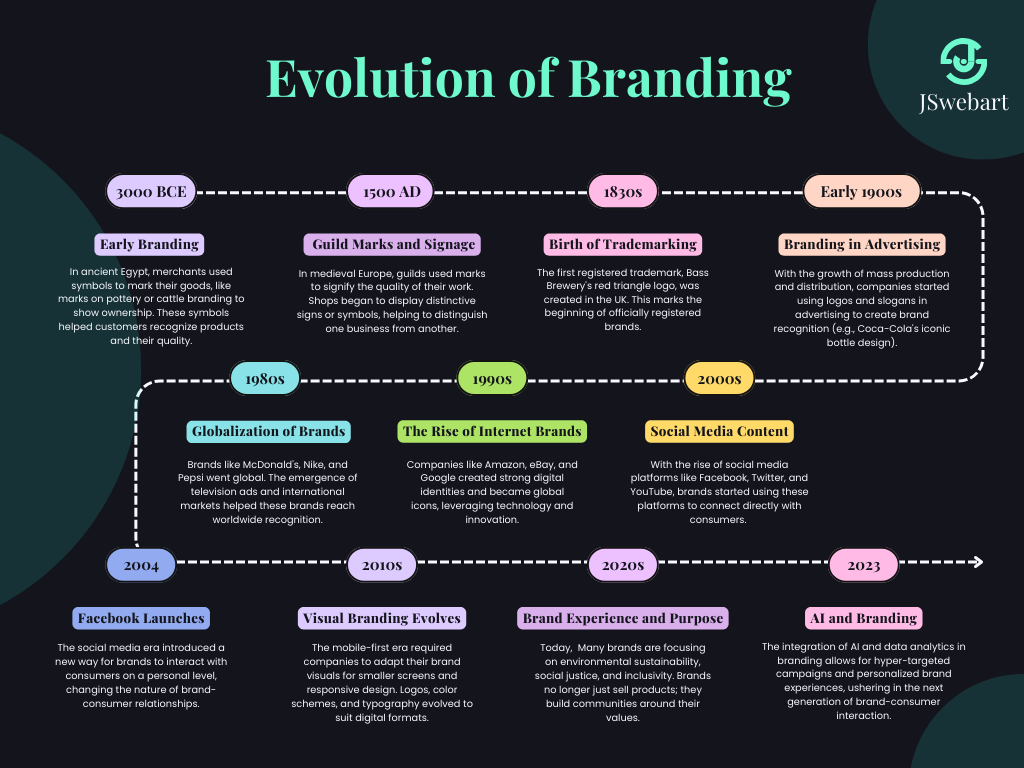
If we look into medieval times, branding became an important tool for differentiating livestock and goods in bustling markets. The face of branding transformed significantly during the industrial revolution in the 19th century. During this time, mass production was happening, and it became a necessity to differentiate one’s product by adding a unique identity to it so that it could thrive in the competitive market of that time. Coca-Cola’s iconic logo, introduced in 1886, is a prime example of branding evolving into a tool for recognition and trust. You can see, branding is playing its role here too. Isn't it interesting?
Let's move further.
In the 20th century, two key elements got added to branding — first is advertising and the second is storytelling. Companies like Nike and McDonald's emerged during this period. They invoked emotions in their customers to build long-lasting connections with the brand.
Now, coming to the present time, the process of branding has become complex and diverse. It now has multiple dimensions attached to it, such as customer experience, digital community, people's perception, brand positioning, brand identity, and a lot more. A 2024 Statista survey found that approximately 64% of consumers prefer to buy from companies that offer personalized brand experiences, emphasizing the importance of customer engagement.
We can say branding has evolved and is a dynamic term. It continues to adapt to market changes and still thrives as an important element of the success of any business.
Now, you have a rough idea of how branding has been an important part of business for ages and it's not static, but a dynamic term.
So, what exactly is branding? How can we define it?
If I simply put my years of understanding of branding, branding is a strategic process to match the gut feeling of the customer to select you among multiple options. You’re probably wondering how gut feeling is associated with branding and how companies manage to ignite this.
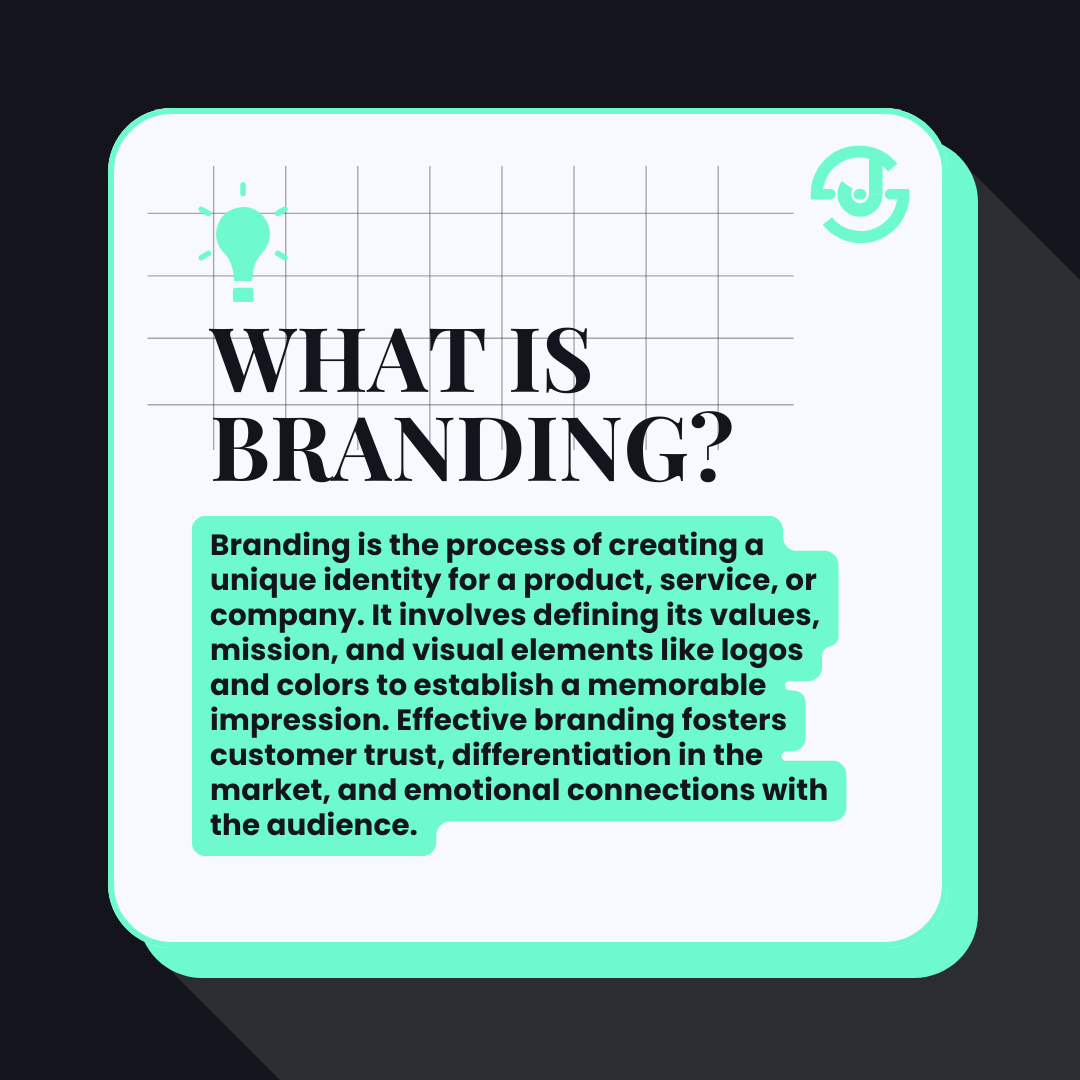
You will always agree with this: Ultimately, the purpose of branding is to build a connection and trust with its customer base. If we understand the customer itself and strategize our branding process through multiple ways, then our brand will have the kind of personality, values, and identity with which the audience can easily connect. And then, get associated with it to choose it among a bundle of choices. I guess now you understand why gut feeling was there in the branding definition.
If we define it conceptually, branding is an ever-changing process that defines how the audience will see any business, product, or individual. It is much more than crafting visual identity or brand messaging; it is about creating an identity that can build an emotional and psychological connection with people. For example, campaigns like Nike’s “You Can’t Stop Us” during the pandemic not only promoted inclusivity but also strengthened emotional connections.
In its essence, it is the art and science of conveying a brand's core values, personality, and mission in such a way that can build trust, loyalty, and recognition.
Now, let's glance through a subtopic before moving into another topic of this blog post.
We know that customer base and marketing demands vary across industries. So, the branding strategy and implementation would also vary according to that.
Here are some examples from various sectors to make you understand branding is not a fixed plan that can be applied to industries irrespective of their niche. It is a well-crafted, industry- and business-specific process that helps that business define itself properly.
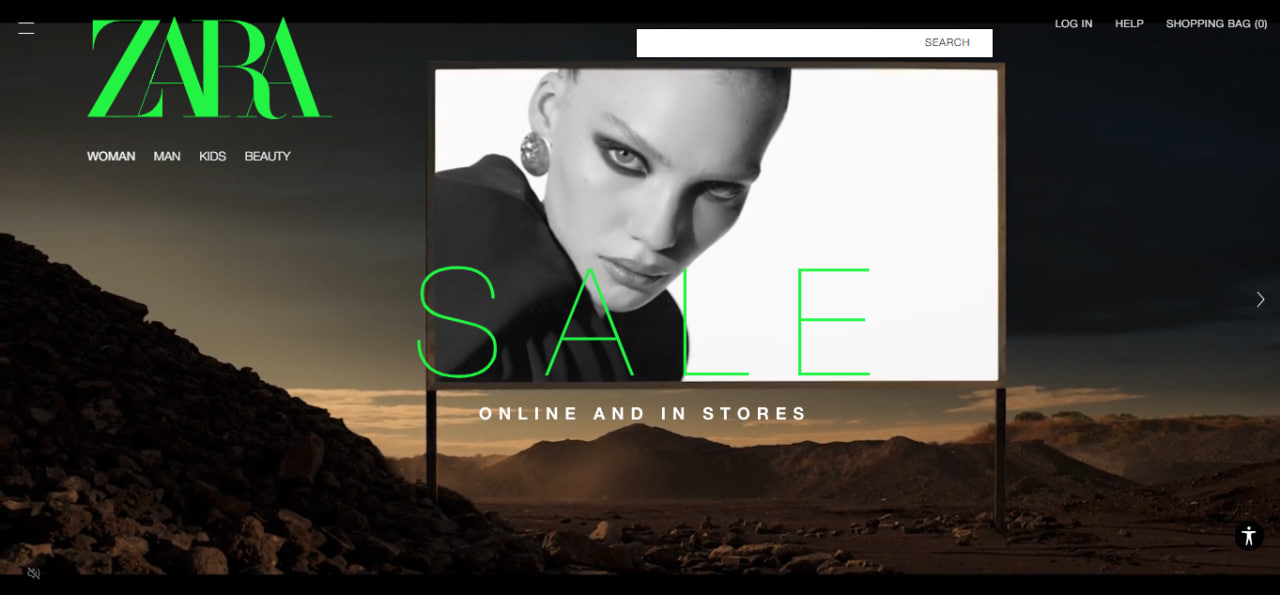
Retail branding focuses on building an emotional connection with the customer as well as giving them the best experience of shopping with them so that they feel loyal and happy to come again to buy products. If we go through retail brands like Zara or Nike, we can observe that they have smartly reflected their brand identity and values through their store UI/UX, social media profiles, and other channels.
Technology branding needs a different approach than retail branding. Here, brands like Apple, Tesla, or SpaceX focus on building their brand position as leaders in innovation and solving problems that humanity as a whole is facing. They focus on building their brand image as forward-looking and at the forefront of technological inventions. So, the branding of the technology sector largely follows simplicity and functionality.

Real estate branding demands approaches that can build trust and credibility in the market so that people can blindly rely on them for buying their dream home. Here, the branding focuses on igniting feelings of luxury through their visual elements like logo, color, typography, photography, etc., and invoking trust, authenticity, and credibility in the hearts and minds of the customers. Real estate agencies like RE/MAX or luxury developers like The Trump Organization communicate with their customers through branding to show its expertise and reliability.
By these few examples, you now understand that branding is not a one-size-fits-all kind of approach; it varies across industries as well as businesses within each industry. It's a complex concept and requires a deep understanding before crafting a process to make any business a "Brand".
Till here, you know what branding is, how it has evolved, and how the branding process differs across and within industries. Let's move on to the next topic to understand the components that are integral to branding.
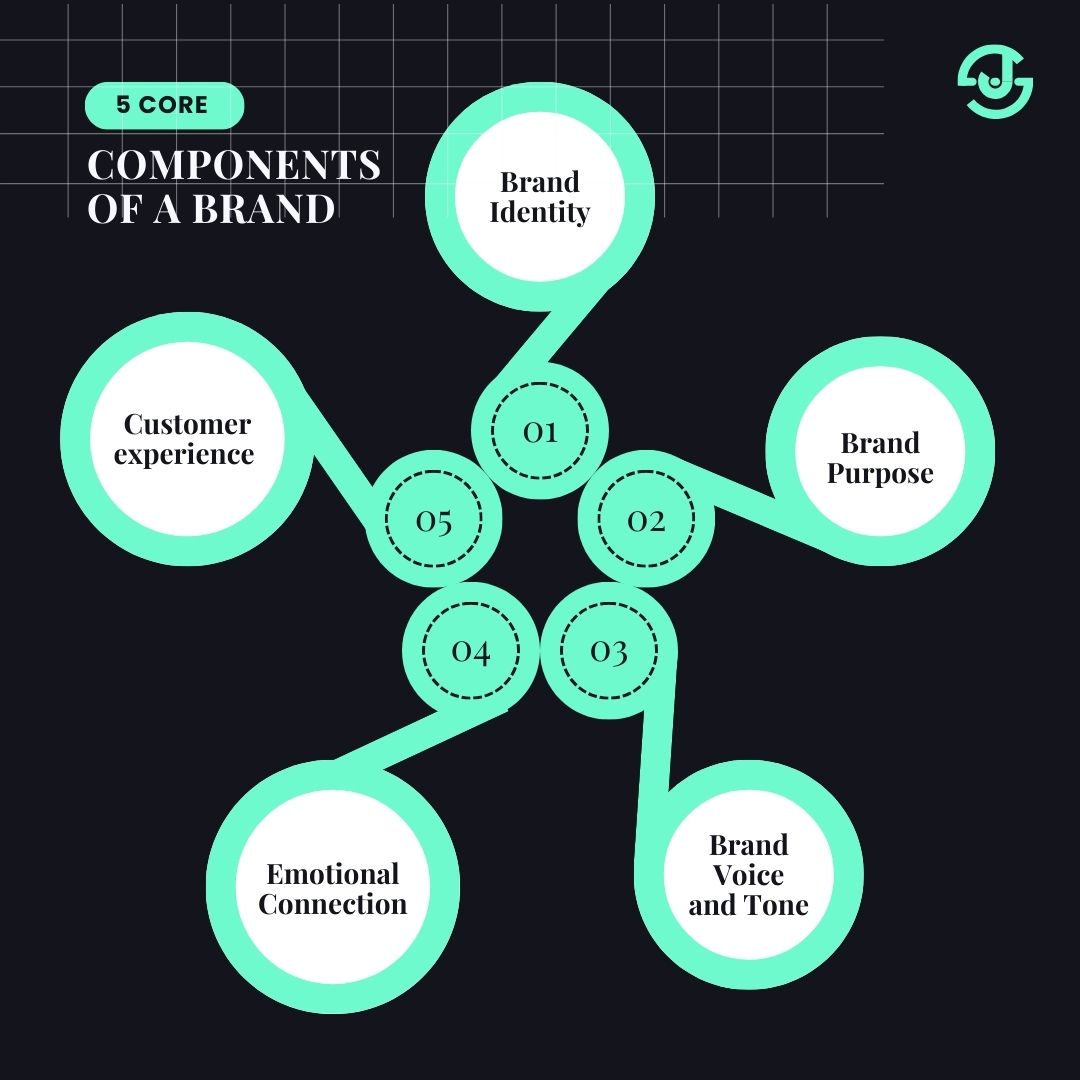
Branding is not just a single entity but a system. It represents a combination of ideas or elements that define its uniqueness. We can say that, like a living entity defined by a different set of values and personality to give it an identity, the same is true for branding too.
Branding also acts as a living entity influenced by numerous elements that harmonize to create its identity.
To grasp the true essence of branding, one must explore its fundamental components, which together shape its personality, influence, and presence in the world. These components are not independent; they interact dynamically and are closely linked, mirroring values, aspirations, and connections.
Let's explore the core components that constitute a brand:
It is the building block of a brand. Brand identity primarily revolves around three things: its design, how it communicates with people that is its tone and messaging style, and the emotional connection it builds with its values and mission.
These three things are not static. It changes to meet the needs of the business, cultural trends, market changes, and customer preferences.
Some of the key features of brand identity are:

In conclusion, we can say that brand identity constitutes the essence of a brand's success and its enduring impact within the marketplace. It does so by building trust, influencing perceptions, and promoting loyalty among its audience.
Brand purpose is the core reason a brand exists beyond profits, acting as its guiding principle and defining its societal value. It builds emotional connections with customers by resonating with shared values, fostering loyalty, and advocacy. Purpose-driven brands embrace social responsibility, addressing issues like sustainability and equality, and maintain cultural relevance by adapting to societal shifts.
Viewed from multiple perspectives, brand purpose reflects a brand's ethos (philosophical), drives economic growth, appeals to intrinsic motivations (psychological), and adapts to global cultural nuances.
Now, the question is how a brand aligns itself with its purpose and what challenges it faces while maintaining it?
A strong brand aligns it's purpose with it's business strategy, eventually influencing innovation, marketing, and employee engagement. It differentiates brands in the market, inspires teams, builds customer loyalty, and drives long-term growth.
The challenges that any brand faces in building its purpose include maintaining authenticity, evolving with societal values, and measuring its impact effectively.
Brand voice and tone are essential for shaping how a brand communicates its personality and values. It represents the consistent personality and style of the brand across all channels. Brand Tone adapts this voice to suit different contexts, audiences, and platforms, ensuring messages resonate appropriately.
From diverse viewpoints, we can understand it in multiple ways such as - brand voice reflects a brand’s ethos (philosophical perspective), respects cultural nuances (global angle), ensures authenticity in automation (technological aspect), and influences audience perception (psychological dimension).
The key elements include clarity, consistency, authenticity, adaptability, and emotional resonance. A strong voice connects emotionally with the audience, differentiates the brand in the market, and ensures effective communication. Adjusting tone enhances relevance, especially during sensitive situations like crises.
Challenges that brand voice and tone face include maintaining consistency across channels, balancing professionalism with relatability, evolving with audience expectations, and being culturally sensitive.
Ultimately, brand voice and tone create trust, deepen engagement, and ensure the brand remains relevant and impactful.
Now, let's understand how brands built long lasting emotional bond with its audience. An emotional connection is the bond the brand creates with its audience by connecting to their feelings, values, and desires. It goes way beyond just selling products, turning customers into loyal supporters.
A brand that emotionally connects is often feel human, relatable, and generally shares the same values as its audience. These brands build trust through wholesome experiences, attentive services, or appealing to the senses. Technology helps brands build deeper emotional bonds through personalized interactions and authentic AI. Also, companies that endorse social responsibility or quality consistency strengthen this bond.
However, their challenges will be walking on the line between relatability and professionalism; staying true to themselves as their brand grows; and adapting to ever-changing consumer values.
This powerful emotional connection provides the brand with a sets an outer dimension of credence to customer's loyalty, trust, and fairly long-lasting relationships to become significant for the customers' lives. This relationship lasts and tends to mold the perceptions over a period of time in favor of the brand, which should facilitate its continued effectiveness even in future.
Customer experience (CX) is essentially the sum of all interactions a customer has with a brand, from first contact to post-purchase engagement. It includes emotional, rational, and social connections that go beyond satisfaction to an emotionally tinged memory that builds loyalty.
We can understand CX is from multiple perspectives:
The challenges to overcome in CX include having complete consistency, integration of technology, and finding a happy medium between what is personalized and what encroaches on an individual's privacy. Above all, outstanding CX builds trust, deepens brand loyalty, and insures long-term growth by creating relevant and impactful relationships with customers.
These five foundation components - Identity, Purpose, Voice and Tone, Emotional Connection, and Customer Experience-are all interdependent. They work together to determine how a brand communicates, resonates, and succeeds in a rapidly changing marketplace. Sufficient mastery of these components will enable a brand to create a strong bond and lasting loyalty with its customers.
Well done!! Now, you have fair understanding about what branding actually is, it's history and components. Let's move on to our third topic in this blog post.

Branding is a process of the creation of a unique identity for a brand, through which a brand can communicate its values and promises to its audience. As this process continues from the very basic visual identifiers such as logos and slogans, branding has become an all-encompassing destination whereby brands and consumers relate to their own emotional, psychological and social connectedness and relationship.
But to understand what branding is requires understanding it in its many forms, each serving some specific need. Let's take a look at some of the different types of branding and how perceptions are molded.
To grasp the true essence of branding, one must explore its fundamental components, which together shape its personality, influence, and presence in the world. These components are not independent; they interact dynamically and are closely linked, mirroring values, aspirations, and connections.
It is a strategic effort to grow a strong identity for the entire organization instead of only for products or services. It integrates all the concerns of the company into a unified image that will reflect on the products, company policy, and its internal culture.
It develops on the theory of organizational identity that describes how organizational culture and values shape external perception. Brand equity is also one of the foundation stones of corporate branding, which translates into consumer trust and loyalty. Moreover, it develops strong relations with customers and stakeholders, allowing them to understand the company’s values and vision.
Everything from messaging to ethical practices to visual identity is coherent and represents corporate branding for an organization. Leaders like Coca-Cola and Microsoft are good examples of a successful global company that relies heavily on corporate branding for recognizable and far-reaching existence beyond individual products.
Personal branding involves marketing yourself as compellingly and consistently as possible in order to embody your values, expertise, and personality. It consists of establishing an online and offline strategic presence that will help position you as an authority in your field and, hence, create bridges with others. The importance of personal branding is in how it affects others' perceptions of you. It enables you to stand out in competitive situations.

Without a doubt, personal branding establishes trust, credibility, and visibility. It opens ways to career advancement, networking opportunities, and new business ventures. Gary Vaynerchuk and Oprah Winfrey effectively became thought leaders in their industries because of their personal brands. A powerful personal brand not only helps to establish connections but also enhances career prospects and allows one to stand out in crowded markets.
Personal branding enables you to take charge of your image, establish your authority, and leave a lasting impact. The ownership of your uniqueness will help define who you are as you bring about the changes that manifest professionally and personally; it plays a significant role.
E-commerce branding is the intentional process of creating an identity for an online store or platform that is putting it several steps ahead of competition. This process includes various elements like brand identity (the logos and design), value proposition (USP), brand voice (consistent messaging), customer experience (user-friendly website, customer support), and packaging.

It empowers organizations to create a differentiating factor in saturated markets, instill trust and credibility in customers, foster customer loyalty, and boost brand recognition. A good brand interacts positively with their customers, increases conversion rates, and aids in retaining customers. Brands, such as Amazon and Nike, used e-commerce branding to place themselves amongst their industry's leaders.
E-commerce branding does not just help increase sales; it greatly contributes to long-term business success through the actual emotional connection created with consumers, making the brand much harder to imitate by the competition. Besides, good branding attracts partners and investors, thus broadening the growth scope. Effective branding in e-commerce is critical for business success and continuity in today’s digital era.
Geographical branding focuses on a specific location-a city, region, state, or a country-and commercializes the uniqueness that sets it apart. This is about natural landscapes, history, or culture. It also helps maintain the uniqueness and authenticity of that area and thereby lends itself to tourism, investment, and business. For example, Switzerland trades on its reputation for quality and precision while New Zealand promotes itself on scenic beauty and adventure tourism.
Cultural branding, on the other hand, revolves around the values, customs, and social relevance that resonate with a target audience. It connects a brand with the lifestyle or beliefs of its customers, such as promoting sustainability or social responsibility. Companies like Nike and Ben & Jerry's use cultural branding to align with social causes and connect emotionally with consumers.
Together, these branding strategies create strong, authentic identities. In tourism, hospitality, and even transport, both geographical and cultural branding are applied to establish their positioning and enhance their appeal to the market.
What makes a product stand out in a crowded marketplace? The answer lies in product branding. Product branding is the process of creating a unique identity for a product that can differentiate it from its competition using a memorable brand name, a distinctive logo, attractive packaging, and a meaningful slogan.
Product branding is important in differentiating a product, developing customer loyalty, and enhancing the perceived value of that product. For example, Apple represents sleek and premium quality with an innovation theme, while Coca-Cola appeals to the emotion of being happy and traditional. These brands do not just sell products; they form an emotional tie-in with consumers.
But what effect does branding really have on a consumer's choice? It increases recognition of the brand, determines the choice of market segment, and maintains relevance with time. Strong product brands support enduring relationships with consumers through strategy development, design, launch, and continued management, developing trust and the eventual success on the market.
There is more about branding that will be discussed further. Let's quickly move on to the fourth topic.
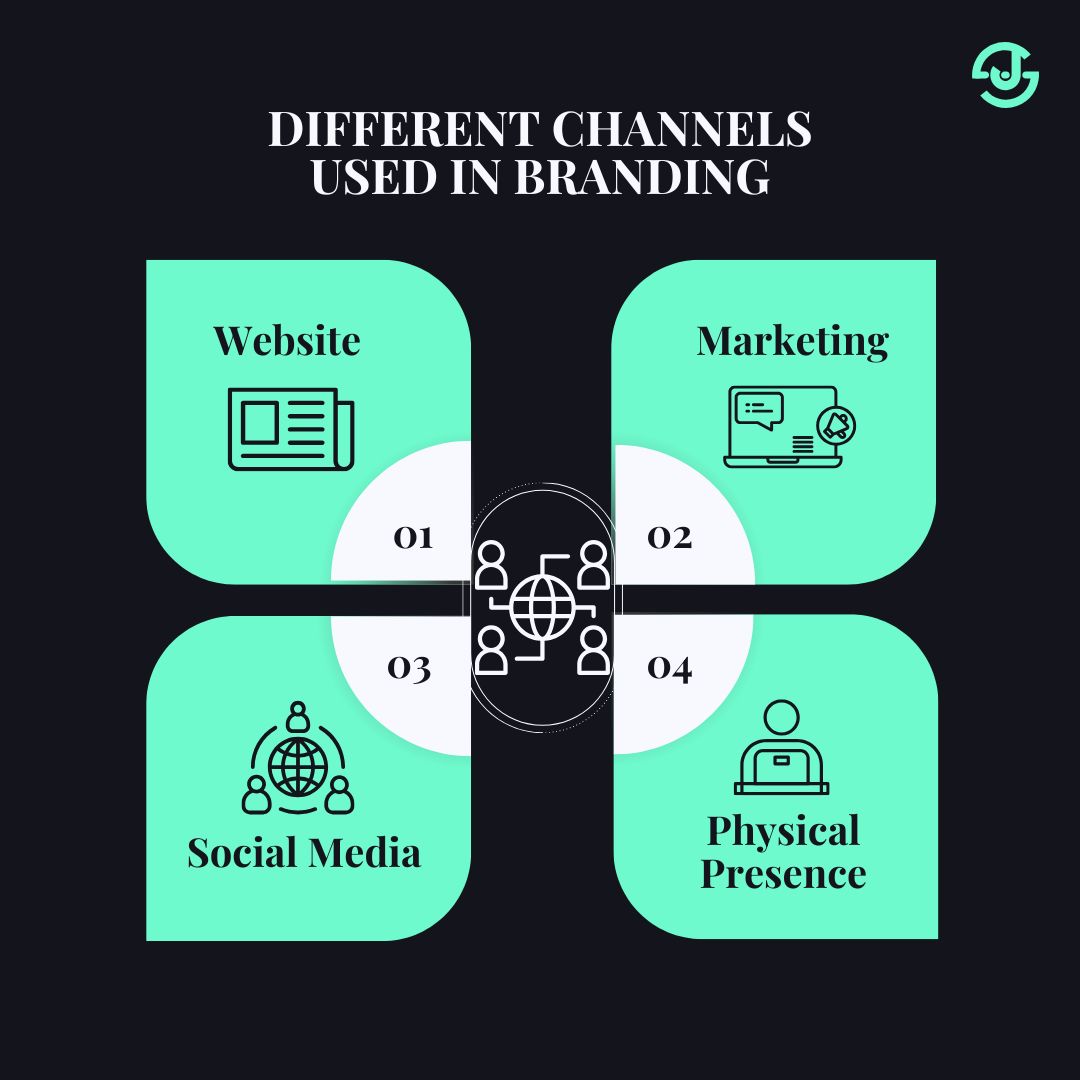
To build and strengthen their brand identity in the globalized world, companies should use different channels. Branding transcends ordinary logos or slogans, extending toward an impactful communication of the company’s values on multiple platforms; these channels will serve as touchpoints where the brand interacts with the consumer to instill a perception and loyalty. However, it takes the careful understanding of these channels for any company to be able to make great strides in building its brand.
Any business website is basically the digital backbone of a brand. It gives clients a chance to connect with the values and offerings of the brand, hence building credibility and trust. An engaging website, where visuals, functionality, and the overall user experience create a good impression, creates an impression in the mind of consumers and represents their brand value. It is a platform for partners or clients to communicate 24/7. A good website tells a strong story through navigation, informative content, and cohesive design, further reinforcing the brand voice and the brand itself and thereby establishing itself as an important tool for building brand equity.
Marketing integrates the brand-elements by communicating the message of the brand consistently across multiple channels. This helps in generating brand authority by communicating values, products, and services that are relevant to the target audience. Marketing is followed by content marketing, paid advertising, and influencer partnerships, and it improves visibility, relevance, and trust. That further determines the market stand of the brand, generates demand, and fosters customer loyalty. Aligning with the brand's core identity, marketing allows businesses to maintain a cohesive front across consumer touchpoints in a way that builds credibility and allows an established, recognizable brand presence in the marketplace. Marketing is a central point in the journey of transforming a brand concept into a powerful presence.
One of the most important advantages of social media is that it gives dynamic communication with audiences to amplify brand identity. The platforms allow brands to showcase their personality and values, while creating a human connection with the consumers. Unlike traditional channels, social media enables real-time dialogue where customer inquiries and concerns can be addressed, which strengthens customer loyalty and emotional ties. Brands become relevant and visible by being a part of cultural conversations. Social media presence based on regular creative efforts focuses on keeping the brand at the top of consumers' minds, which builds a long-term recognition, trust, and engagement with the audience. That provides a vital role in bringing a human face to the brand and enhances its presence.

The tangible presence of a brand creates an experience that is unmatched by digital platforms. For companies with physical spaces such as retail stores or restaurants, to them, the in-person experience is a blueprint and expression of everything the brand stands for. Store design, ambiance, and customer service give depth to the brand identity and sense of authenticity. For example, luxury brands curate a grand in-store experience for the sake of demonstrating exclusivity. In addition, the physical presence build credibility since consumers cannot shy away from purchasing what has a quality assurance for a brand; it can serve as a benchmark for building word-of-mouth marketing through which other facets of brand visibility/loyalty will further increase.
The website, social media, physical presence, and marketing channels define, promote, and add value to a brand in a symmetric way. These five channels provide reliability, loyalty, and long-term success through consistent, engaging, and memorable brand messaging.
Woohoo!! Together we have completed a large portion of this blog. There is more knowledge to come further. Let's move on to the fifth topic.
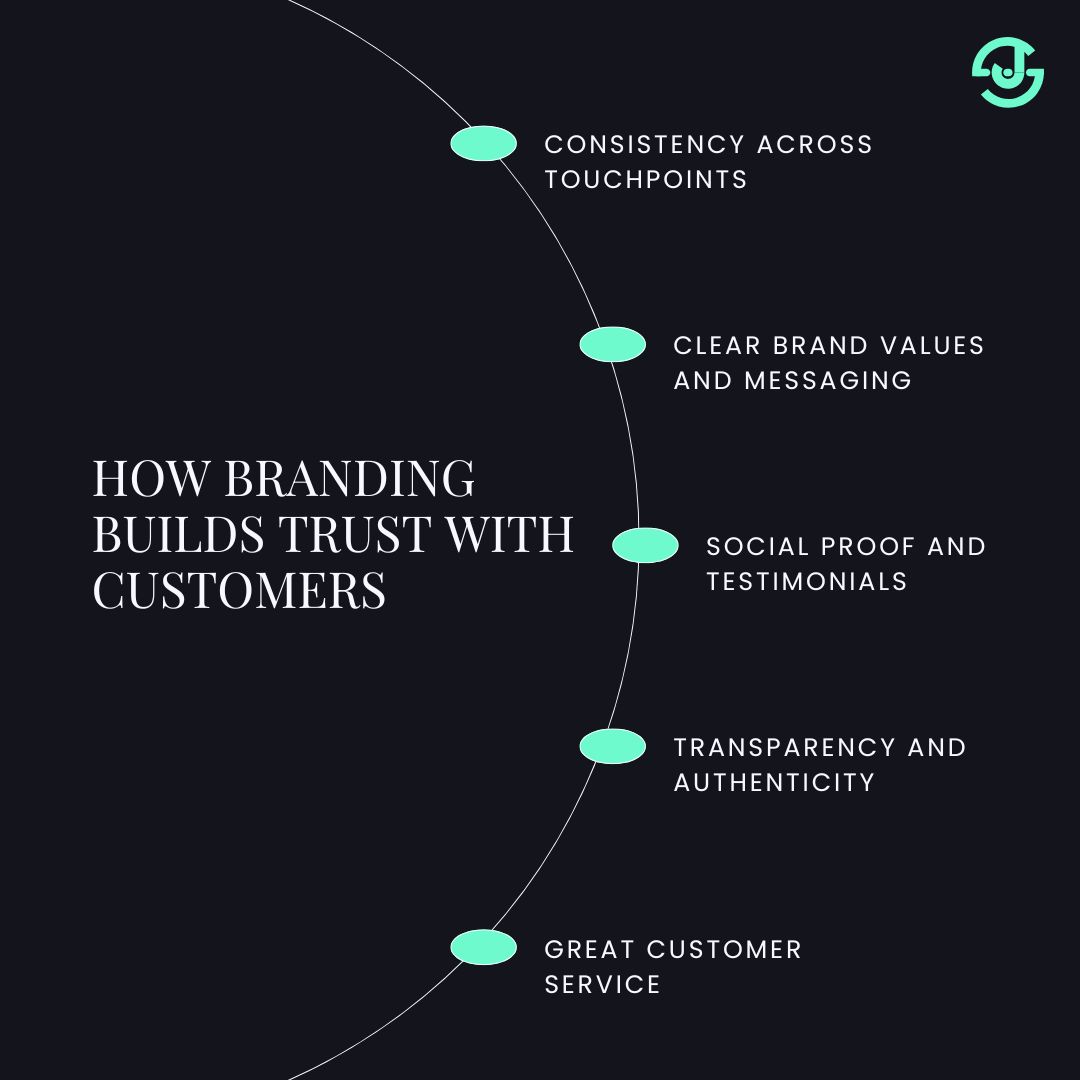
Building trust among customers is an important part of a successful branding operation. Trust is built as a base for a healthy relationship between businesses and their audiences. This affects their purchase choices and loyalty over the long period. Branding comprises more than a logo or a cool catchphrase; it must convey coherent messaging, articulate values, and deliver consistent service that ultimately works to build the trust of customers. Here are five essential ways branding cultivates trust with customers:
Consistency in brand touches makes sure that a customer gets a very similar experience over any touchpoint, be it online or offline. A brand that puts forth an integrated message, takes care of visual identity, and, above all, manages its customer experience, creates an expectation. Consistent branding builds up trust, showing that a business can be counted on, reliable, and is well organized. With consistent branding, customers feel that they can expect the same quality and values from every interaction.
Strong branding conveys what the company stands for and what mission it is on. The more people buy into the spirit of the brand-which can mean sustainability, ethical practices, or social responsibility-the more they'll trust it. When brands are open about what they want, what they do, and what results are achieved, customers trust them and can make decisions with confidence. A brand that stands for something above and beyond profits has stronger emotional connections and trust.
Customer reviews, testimonials, and user-generated content play a crucial role in establishing trust. It is other customers' genuine experience when reviewing a brand that acts as social proof for those buying into it. A prospective customer is more willing to trust a brand when they read real success stories from fellow buyers. Reviews, case studies, or customer success stories in their websites or social media accounts give additional value and work well in enhancing brand credibility.
To gain customers' trust, brands should give proper information concerning their practice - whether it is about design processes, pricing, or sourcing. Authenticity and genuine dialogue are two prerequisites for trust-building. Customers value such practiced transparency as their informed decision-making gets easier when companies reveal their strengths and weaknesses. Therefore, brands that truly embrace creating an open environment, while discouraging deceptive claims, stand a better chance of obtaining solid and trusting relationships with their audience.
Branding also relates to the consumers' experiences with a company's service. Companies providing fantastic customer service and addressing customer issues will earn greater trust. The brand's willingness to commit to fixing consumer complaints, ease their returns, and guarantee all customers' satisfaction only strengthens its reliability in customers' eyes-trustable in a real sense. Good service leaves a long-lasting positive impression that shows the customers that the brand cares for their needs.
Therefore, trust comes at the heart of successful branding. It builds employee satisfaction as well. By ensuring consistency, defining their values adequately, showing social proof from others, engaging in transparency upon matters like pricing, delivery systems, etc., and utilizing excellent service, companies can build up trusted relationships with their consumers for the long-term. This trust nurtures customer loyalty, gets them to return time after time, and persuades them to tell their friends-this is part of the continuity of any successful brand.
Now, let's understand why branding is crucial for your business's success and long-term growth.
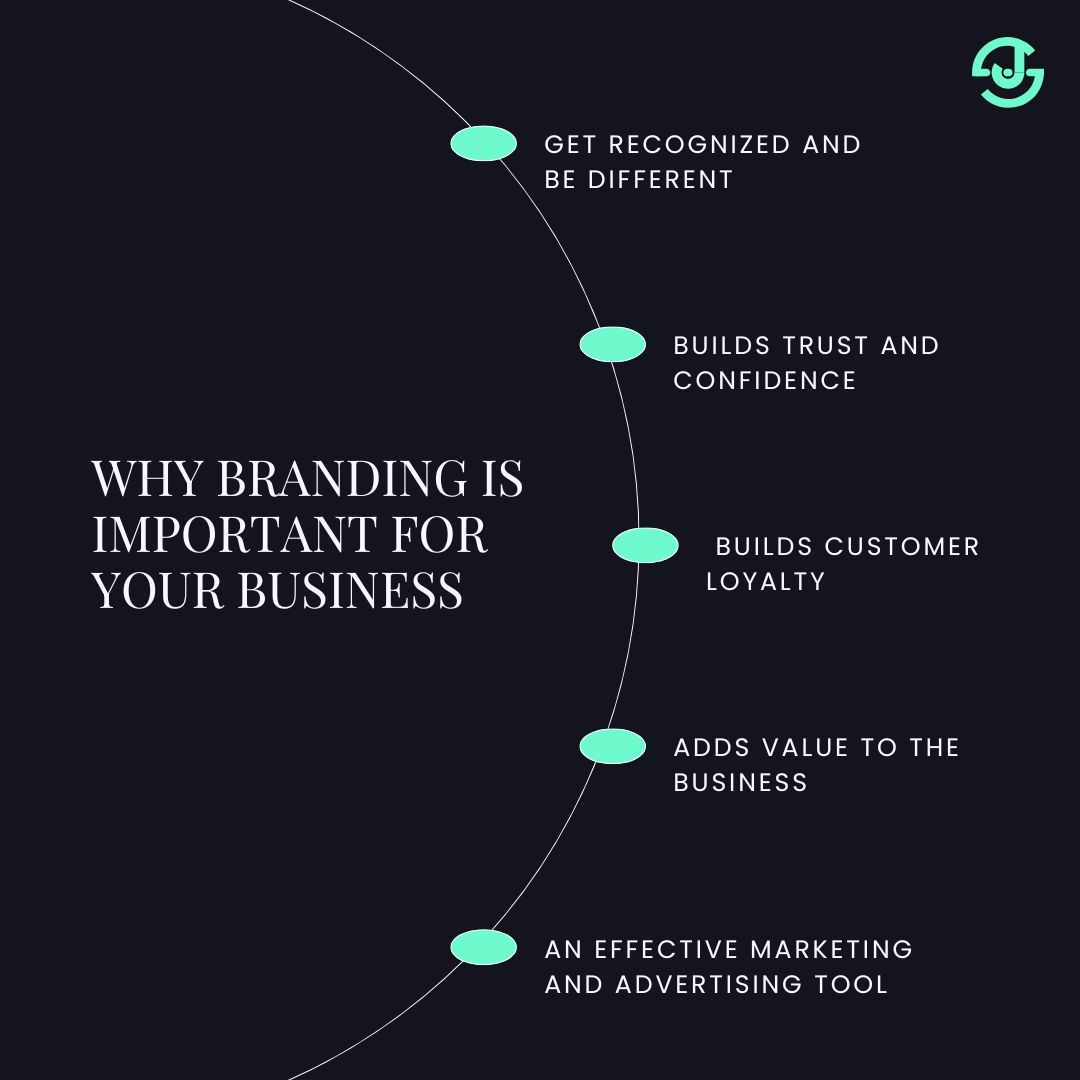
You already understand that branding is much more than just logos and slogans. It forms the essence of the values, the identity, and even how a business is perceived in the marketplace. Brand in today’s business world inspires trust among buyers, enables competitive advantages, and ensures sustainable growth. Thus branding does not just set your business apart, but it also builds a bridge to connect with the audience. Here I'll highlight five of the best actual reasons that make branding an important part of your business success.
In cases where all products are equal, a business has to stand out to access this market. As branding approaches to establish its own identity, it rests on aspects that are recognizable both visually and emotionally. Through the application of set elements of design, colors, message, branding gives your company stand tall and unique from similar companies of the same product or service. However, making this differentiation contributes the most to your business visibility but also helps create a lasting impression in the minds of consumers, thus ensuring your business stays first in mind even when a needs arises.
Branding gives a clear idea to your customers of what they should expect to see, along with building trust through consistent impressions of a credible business. Reputable branding conveys to the consumer that your business is indeed trustworthy, professional, and genuinely interested in offering value to them. Consistent branding at every point of customer interactions, whether online or offline, creates this perception boost in the consumers so that one is confident of committing to a specific brand. If you can manage to build a brand enjoying certain support, the probability of a repeat customer is drastically increased.
One of the most valuable assets that a business can develop is customer loyalty, with branding being the primary instrument in this regard. Branding creates an emotional connection that goes beyond the transactional nature of many companies, with brands that are either lifestyles, value systems, or emotions; the customers feel more identified with such brands' values and engaging stories. The loyal customers who identify with the brand ethos and narrative often tend to be repeat buyers and act as brand ambassadors. In the end, this connection amounts to sustainability in business growth since loyal customers are more likely to act as word-of-mouth advertisers and generate plenty of sales with a predictable revenue stream.
A brand is a strong, well-recognized label that adds substantial intrinsic value to a business. The business will command premium pricing on account of perceived value and will gain a competitive advantage. Brands with strong identities are perceived as more stable and trustworthy; thus, will attract the investor, partners, and talent pool, which adds to the market position. Thus, branding is not just a tool for consumer engagement but also a significant component of business valuation.
Branding becomes the cornerstone of effective marketing and advertising strategies. When a brand is effectively defined, clarity and coherence follow in all its campaigns; communication is thus made multi-channel. In that way, the business gets a chance to express its unique value proposition more coherently and more powerfully towards gaining the right marketing, synchronized with understandable consumer expectations. A unified brand identity makes a positive contribution to customer engagement and conversion because it ends up making it familiar to the eyes of the target audience and builds an atmosphere of trust.
Branding is essential for the success of a business because it creates an identity, instills trust, and cultivates loyalty. An excellent brand gives a competitive edge that drives long-term growth and profits. Branding assists the business in standing out from the crowd and further reinforces its overall strategy by establishing the way it is perceived.
Now, let’s dive into the concept of marketing, explore its relationship with branding, and understand how they differ from each other.
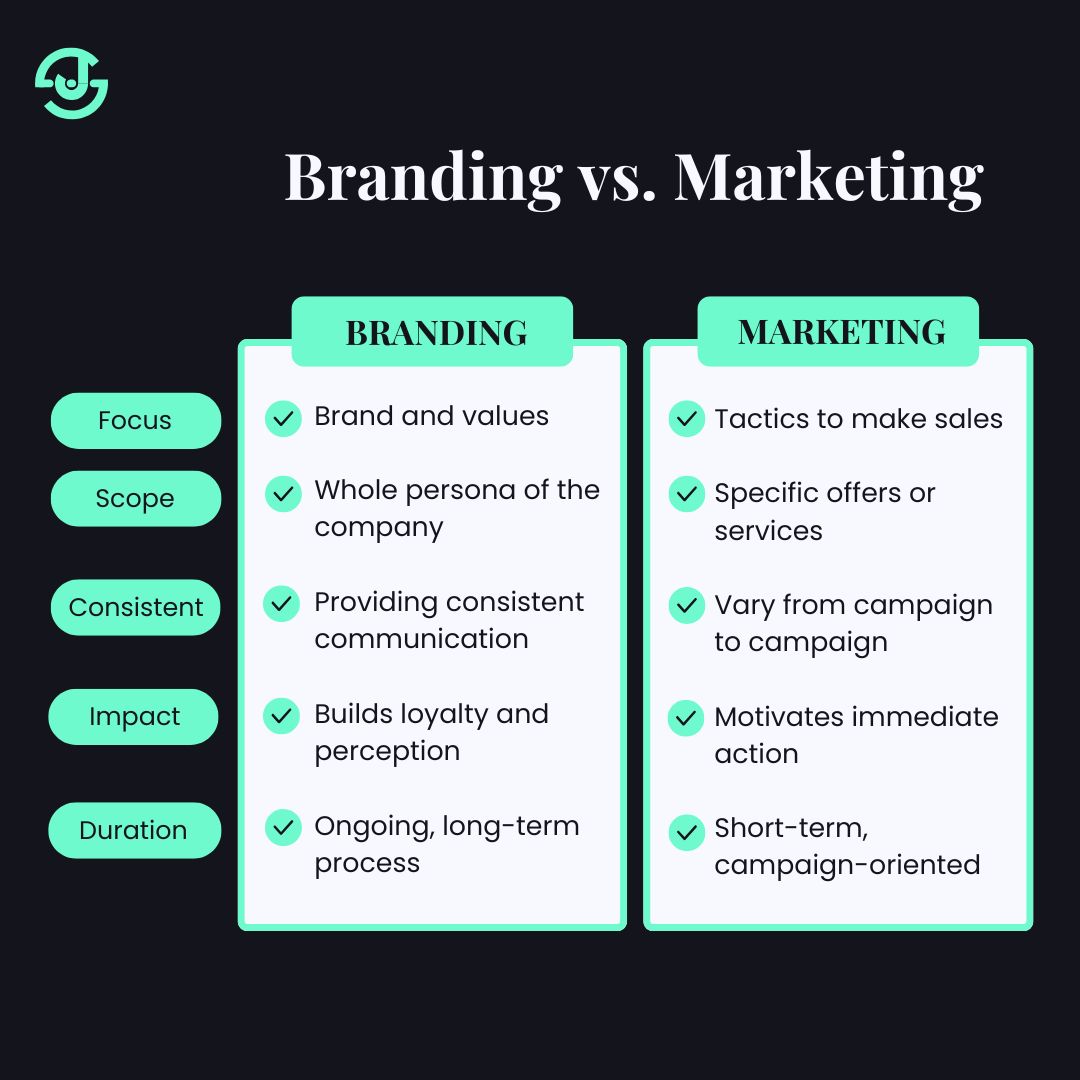
Marketing is an activity that involves promoting, selling, and distributing products or services. It includes activities such as market research in advertising, pricing, and customer service to attract and retain customers. At its core, marketing is a lot about understanding what customers really need and providing them with good value. Some more important components might be market research to see what consumers prefer, advertising to get the brand message across, product strategy to differentiate the offering, pricing that reflects value, and distribution to ensure that consumers can access the product.
Though interrelated, marketing and branding have different roles to play within a business's market presence. Branding defines a company's personality with the long-term aim of creating trust and emotional bonding with its consumers. Branding focuses on generating a consistent imagery that connects with its audience.
In contrast, marketing is the strategy by which the value of a brand is communicated to consumers. This includes promoting a product to create demand and establish sales through advertising, public relations, content creation, among others. Marketing uses branding to ensure that the message gets to the right audiences.
As a case in point, a brand with an eco-friendly approach would market things with obvious eco-friendly benefits or initiatives, consistent with its values. Such synergy ensures that branding and marketing reinforce each other for a consistent consumer experience. Ultimately, branding frames the foundation, while marketing is the tool to share that message with the world.
Now, you probably want to know are there any differences between these two or not?
Obviously, they differ in many ways. Let's understand it here.
These are some of the key differences between the two:
Now, let’s dive into the concept of marketing, explore its relationship with branding, and understand how they differ from each other.
Branding and marketing are both important for the success of a given company but they play different roles. While the first makes an emotional connection with customers by establishing the individual characters and values for which a company stands, the second brings that character to life through carefully targeted campaigns. Branding builds long-lasting trust and loyalty, while marketing drives immediate sales. Together, they create a robust strategy for the attraction and engagement of consumers, ensuring sustainability and profitability for businesses.
Now, let's explore how you can establish a strong and distinct identity for your brand.
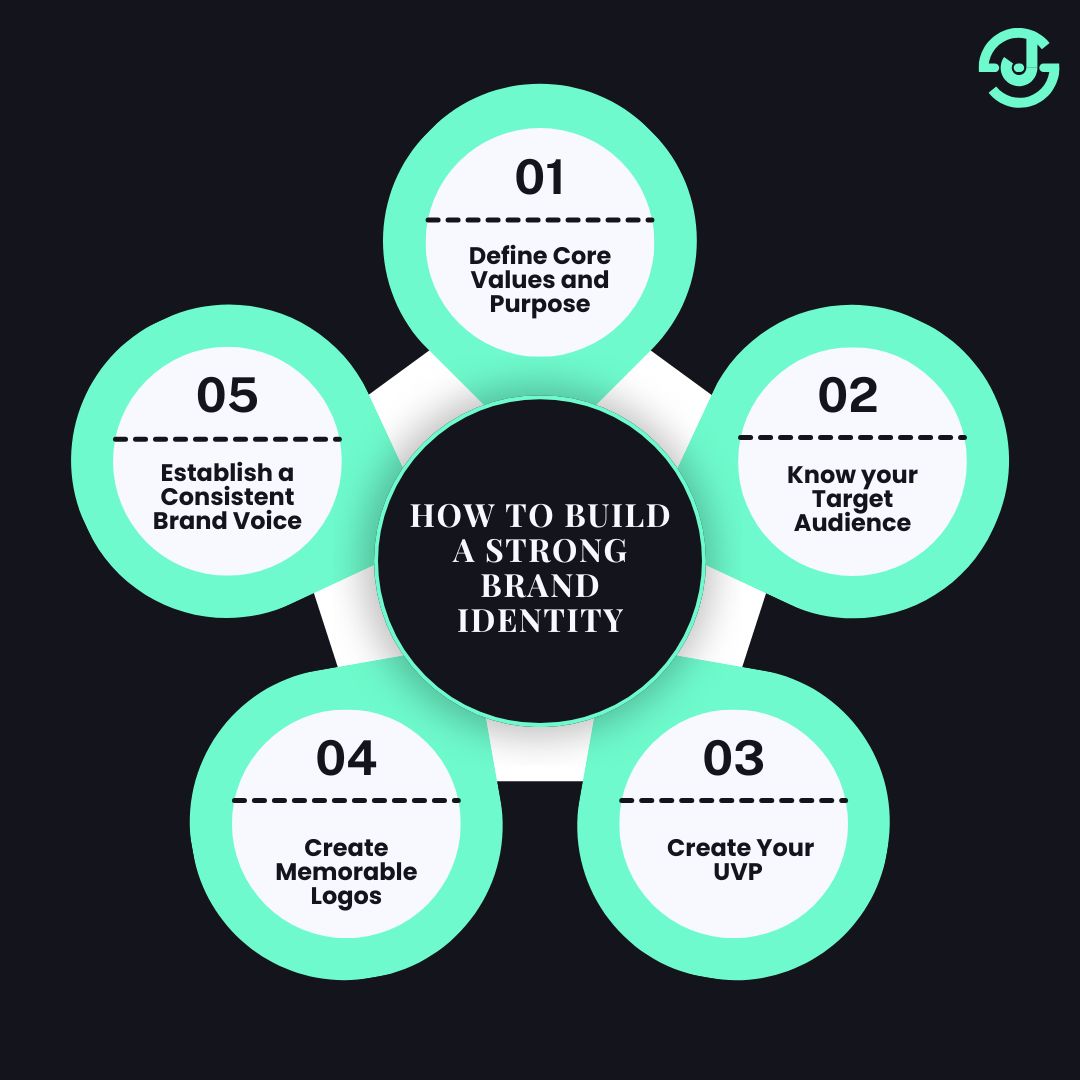
What makes your brand strong is very important in order to stand out from competition in the business world. It provides a perception of who you are in the minds of consumers and builds loyalty for generations to come. These are five important steps of building strong brand identity:
To conclude, creating a brand identity is an ongoing process. If you keep doing these five, one day, you would have a brand that resonates with your customers, builds trust, and eventually will rise to success.
Suppose you already have a brand with a strong identity. But will this remain consistent in the time to come? Probably not!
Below are some points that can help you maintain consistency.

Brand consistency is necessary to build trust, awareness, and an emotional connection with the audience. A cohesive brand identity ensures that each contact with the audience reflects the values and vision of the company and creates a positive experience. Here are some recommendations to enhance brand consistency:
This sets clear standards for using the logos, laurel styles, color palettes, value offerings, and other verbal and kinetic elements throughout the communications.
Ensure the same logo, colors, and fonts are used at every opportunity.
The tone of the voice used on social media, email, and ads should remain constant to express the core values of the brand.
Your branding should be consistent from your website through social media, packaging, and customer service encounters for a comforting customer experience.
Audit routinely to check if your branding fits into your vision and values; where necessary, make changes while still remaining true to who you are.
In conclusion, brand consistency is essential for developing an integrated trusted experience for your audience on the path to building long-lasting loyalty and success.
Now, look at the successful brands and understand some of their core branding aspects and how that helped them grow.
In this topic, I will show practical implementation of the concepts you have learnt till now in this blog. For this, I will take you to the tour of understanding core branding aspects of some popular brands.
First of all we will analyze the Apple Inc. It is an iconic brand and one of the leading brands in the world. Its branding strategy has built a loyal customer base while simultaneously retaining its technological market share. This has made one of the most valuable brands worldwide.
let's see it's success from branding point of view:
Apple's clean-cut logo, minimalism, and classy packaging exude innovation and class. This simple sophistication has universal appeal to its customers, allowing them to instantly recognize the brand.
Apple's voice is confident, inspirational, and user-centric in nature. There is stress on the user's simplicity and empowerment that creates trust and aligns the brand with progress and innovation.
Campaigns such as "Think Different" emphasize creativity and individualism and ensure an emotional pull. Apple's product communication tends to present benefits over technical specifications which eventually make technology simple and desirable.
Apple retail stores offer the immersive experience where the products are installed in an appealing and hands-on environment. The integration features of iPhone to Mac create ease and customer loyalty.
Apple differentiates itself as a technology pioneer by creating its own easy and enhanced designs and ecosystems such as iOS and iCloud.
Apple has capitalized upon this cohesive branding strategy to enhance its premium positioning, gain customer loyalty, and maintain market leadership. It has groomed such an environment around aesthetics, user experience, and emotional connection, which hoists not only easy customers but life-time brand advocates, promoting sustained growth and global recognition.

Now let us see the impact of branding through the analysis of Nike's brand components that has made it dominate both the athletic and lifestyle markets globally.
The Swoosh, an icon, reflects speed, motion, and victory, with strong, sporty typography giving energy and confidence. Clean and clear design ensures instant recognition, inspiring dreams of sporting success.
Motivational and empowering and celebrating anyone's athletic spirit, Nike motivates people to break through barriers and reach their best.
The great “Just do it” campaign is more than advertising; it’s a war cry for everyone with guts and gumption. Campaigns invariably revolve around universal topics of courage and resilience.
Nike has all kinds of ways to connect: Nike Training Club and Nike Run Club get you moving and are tailored to the right fit for fitness. Collaborations with top athletes and influencers keep its credibility and reach.
Nike's Air Max, Flyknit, and Dri-FIT technologies represent genuinely revolutionary products in performance and cutting-edge solutions for athletes.
In all its branding endeavours, Nike unites its constituency reminding them of excellence aspirations. It is this perfect mix of innovation, emotional pull, and big ideas that positioned it to be a culture and global pioneer in sports-and-more.
A strong brand is recognizable and consistent across platforms, while emotionally connected to the target audience. It builds trust, creates loyalty, and clearly conveys a message that sets it apart from its competition.
Brand positioning is the way in which a brand finds its place as announced to its clients within the marketplace; it helps brand build an individual image and tell the customers why a brand would be better for them compared to others.
Yes, branding is necessary for every small business as it creates a strong identity, builds trust with consumers, and creates a competitive edge against its rivals.
Rebranding is good practice when it looks to re-align your business back on your target customer's needs, industry trends, or business goals. Do not do frequent changes because this would break the consistency of the brand, and confuse your audience.
Brand consistency builds trust among customers by ensuring that messaging, visuals, and values remain uniform consistently across all the channels. This reinforces your identity, making your brand trustworthy and dependable in the eyes of your audience.
A brand guideline is a set of ownership instructions for how the brand should be presented visually and written; essentially, It ensures consistency in how a brand expresses itself in terms of messaging, logo, color, and fonts across all the platforms. It is crucial for a brand to keep a unified identity.
I hope this blog has served you well and helped you resolve your ambiguities about the term "Branding" and prepared you to understand it better the next time you hear or read anything about it. In our next blog, I will dive deeper into the minute aspects of branding. A flow of knowledge is about to come. Stay tuned with us!
Just for your information, If you’re seeking professional help in bringing your vision to life, JSwebart is here to help. We provide comprehensive branding solutions, including Branding, Digital Marketing, Web Development, UI/UX Design, Graphic Design, Packaging Design, and Print Design. If you ever need these services, feel free to contact us. Our team will help you achieve your mission and goals.
Our expert team is here to bring your vision to life with customized solutions that drive growth.